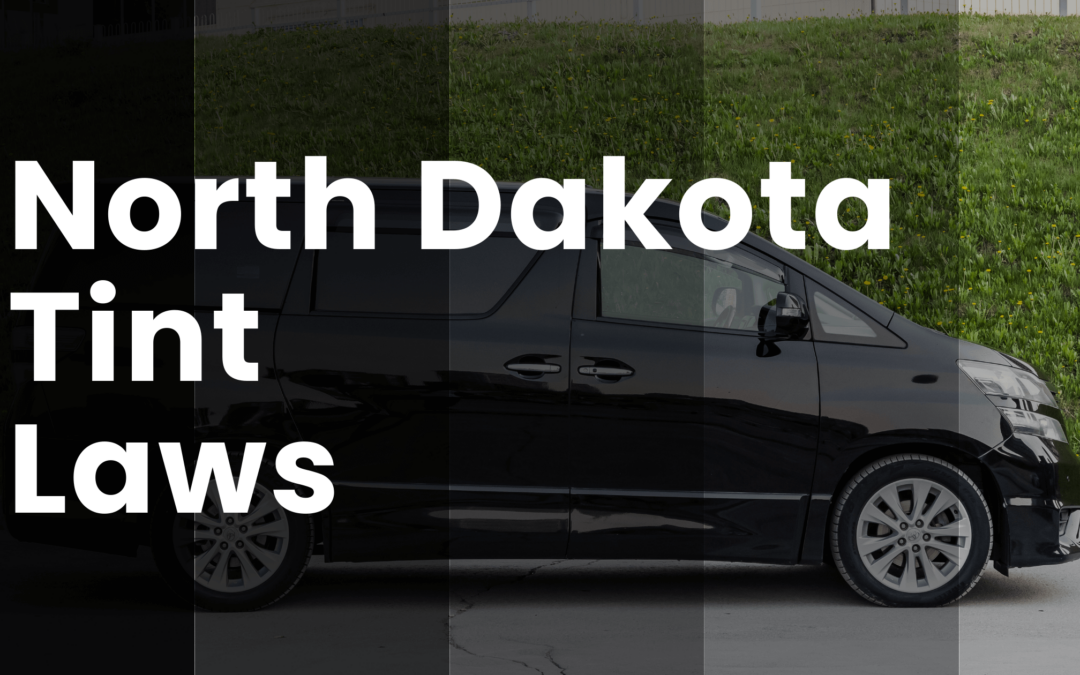North Dakota Tint Laws
In the realm of car window tinting, North Dakota, since enacting its laws in 2003, has established precise guidelines for the permissible darkness of window tints and the reflectivity they may exhibit. Vehicle owners in the state need to comprehend these regulations to ensure both compliance and avert potential legal issues. Here, we break down North Dakota’s car window tinting laws to provide a comprehensive understanding.
Understanding the Terminology Regarding Tint Laws
The most important part of the legislation is understanding what VLT is and how law enforcement services check or test the percentage.
What is VLT
VLT, or Visible Light Transmission, is a measure of the amount of visible light that can pass through a window tint or film. It is commonly used to determine the darkness or opacity of window tints, and it’s an important factor in window tinting laws and regulations.
VLT is typically expressed as a percentage. For example, a window tint with a VLT of 20% allows only 20% of visible light to pass through, making it relatively dark and less transparent. Conversely, a window tint with a VLT of 70% allows 70% of visible light to pass through and is much lighter and more transparent.
How do Law Enforcement services test the VLT percentage?
Window tinting laws vary by jurisdiction, and they often specify the maximum allowable VLT for different types of windows on a vehicle, such as the front windshield, front side windows, rear side windows, and rear window. These laws are designed to ensure that drivers have adequate visibility and that law enforcement can see into vehicles for safety and identification purposes. The manner that they go about testing the VLT is by using a VLT gauge/meter.
Here is a YouTube Short from @TrafficServices and @TorontoPolice showcasing the device and how it works. Even though it is in Canada, it still is helpful to understand how the tint darkness is measured.
Window Tint Darkness in North Dakota:
The state’s regulations primarily revolve around the concept of Visible Light Transmission (VLT), which specifies the percentage of visible light allowed through car windows. North Dakota’s tinting laws differentiate between sedan cars and SUVs/vans, each having its own set of standards.
North Dakota Car Tint Law For Sedans:
- Windshield: Tints on the windshield must permit more than 70% of light transmission.
- Front Side Windows: These windows must allow more than 50% of light in.
- Back Side Windows: The law does not specify any particular level of darkness, allowing a wide range of tints.
- Rear Window: Similar to back side windows, there are no specific regulations governing the darkness of the rear window.
Tint Law For SUVs and Vans in North Dakota:
- Windshield: The windshield on SUVs and vans must also allow more than 70% of light transmission.
- Front Side Windows: Front side windows on SUVs and vans should permit more than 50% of light.
- Back Side Windows: Similar to sedans, there are no specific restrictions on the darkness of back side windows.
- Rear Window: As with back side windows, the law does not impose specific regulations for the rear window of SUVs and vans.
| Type of Window | Sedans | SUVs/Vans |
|---|---|---|
| Windshield | More than 70% light transmission required | More than 70% light transmission required |
| Front Side Windows | More than 50% of light must be allowed | More than 50% of light must be allowed |
| Back Side Windows | No specific darkness regulations | No specific darkness regulations |
| Rear Window | No specific darkness regulations | No specific darkness regulations |
Window Tint Reflection in North Dakota:
Window tint can serve as a reflective barrier, reducing glare and heat. In North Dakota, the law permits window tints to reflect a certain degree of incoming light. To stay in compliance, it’s essential to be attentive to these regulations.
Tint Reflection for Sedans and SUVs/Vans:
- Front Side Windows: These windows must not exhibit a metallic or mirrored appearance.
- Back Side Windows: Similar to front side windows, back side windows must not display a metallic or mirrored appearance.
Additional North Dakota Window Tint Rules and Regulations:
North Dakota’s window tinting laws encompass several other essential rules:
Side Mirrors
Dual side mirrors are required if any window behind the driver is tinted. This enhances visibility and safety.
Restricted Colors
North Dakota does not specify any particular tint colors that are restricted from usage.
Certificates
Unlike some states, film manufacturers are not obligated to certify the film they sell in North Dakota.
Stickers
North Dakota does not mandate the use of stickers to identify legal tinting.
Medical Exceptions
It’s important to note that North Dakota no longer grants medical exemptions for window tint. This means all vehicles must adhere to the standard regulations.
Regulations for Out-of-State Drivers
The same regulations apply to out-of-state drivers as those for drivers living in the State.
If you are from States such as Minnesota, Montana, and South Dakota, you are expected to abide by these laws and regulations.
Penalties
Violations of these tint regulations may result in legal penalties. Vehicle owners should familiarize themselves with the potential consequences of non-compliance.
It’s crucial to remember that North Dakota’s tinting laws may be subject to varying interpretations depending on the county or local area. To ensure full compliance, it is advisable to cross-verify this information with your local Department of Motor Vehicles (DMV) or consult law enforcement authorities.
Our information regarding North Dakota’s window tint laws was most recently updated in 2023. Your trust in our resources is invaluable, and we are dedicated to providing accurate, up-to-date information. If you come across any inaccuracies or outdated details, please feel free to contact us, and we will promptly address them.

